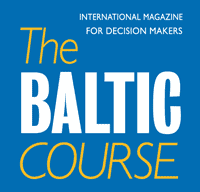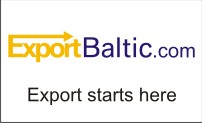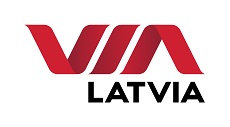Economics, EU – Baltic States, Integration
International Internet Magazine. Baltic States news & analytics
Friday, 25.07.2025, 05:10
Flexicurity: a new instrument in resolving economic issues in Europe
 Print version
Print versionHowever, there is a danger in the process of emulation flexicurity in the European region, e.g. different level of economic development can provide inherent restrictions for the flexicurity as a would-be universal instrument to streamline labor markets.
An integral component
In November 1997, at the European Council Summit the European Employment Strategy was launched with the aim of coordinating member states’ labour market development. That was a logical outcome of the Amsterdam Treaty (signed in October 1997) provisions according to which a new title on employment was inserted into the treaty. Then, Lisbon 2000 Strategy followed underlining competitive and strong European economy, with more a better jobs and greater social cohesion by 2010. The general target was to reach at least 70 per cent employment level in the European Union.
According to the Treaty, “the Council shall ensure coordination of the general economic policies of the member states” (art.202); labour market regulations and employment are definitely among the main items for coordination. Different countries explore different ways to increase employment; no single and fit-all-strategy existed so far. However some recommendations from the Commission have appeared recently. Thus lately, the concept of flexicurity has been discussed in the EU with an idea to advocate it as a solution to economic problems, making it an integral component of the EU strategy for growth.
Coping with two main elements
As is seen in the concept, flexicurity consists of two “ingredients” – flexibility, which detects economic adjustment to new challenges and structural changes, and security, which reflects adequate social and income protection for individuals exposed to changes.
The recommendations for the flexicurity concept’s development have appeared for the first time in European Councils’ conclusions in March 2006 and 2007 underlining “the need to achieve the objectives of the renewed Lisbon Strategy, in particular more and better jobs, and at the same time to modernize the European social models”. The latter notion on social model is particularly important as flexicurity has been regarded in Commission’s documents as “an integrated strategy to enhance flexibility and security in the labour market” being part of the prospective social security development.
Four components
There are several approaches to flexicurity; the most common and vague concept, so-called welfare state model, include the following four main components:
- flexible and reliable contractual arrangements, mainly through labour laws and collective agreements;
- comprehensive lifelong learning strategies to ensure the continual training and re-training of workers;
- effective and active labour market policies to reduce unemployment and ease transition to new jobs according to structural changes, and
- modern social security systems which provide income support and facilitate mobility.
See: Swedish Institute for European Policy Studies, in: www.sieps.se
Flexicurity system based on these components, with certain variations, successfully exists in Scandinavian countries (mainly in Denmark), Austria and the Netherlands.
Danish economic model and flexicurity
Danish welfare model is commonly recognised in Europe as a successful implementation of popular concept when “few have too much and fewer too little”. These words, according to Danish politician N.F.S.Grundtvig (1783-1872), performed a general background for both the welfare model and the present approaches to the labour market structures.
As to the Danish welfare formula, taxes perform a tool, or an equalization of income, the expression which means that everyone has the necessary means of subsistence to lead a reasonable life. This model means, for example, that about 33 per cent of taxes collected are paid back to the citizens as transfer income, though tax burden in Denmark is one of the highest in the world (more that 50 per cent). At the same time, the public sector accounts for about a third of all employees in the country.
People noticed that they are getting real service for such high taxes, e.g. free education, free medical and hospital services and good roads, etc.
Therefore the debates in the country are not about the balance between the public and private sector services but rather about the more efficient public services.
As to the flexicurity, employees in Denmark enjoy both good wages and fare social benefits. At the same time, Danish companies are among the most competitive in the world.
Danish workers are among highly organised in the world (about 85% belong to unions, according to Focus Denmark, vol.3, 2007, p.9). Nevertheless, Danish employers can fire employees at a very short notice, which allows the companies to adjust the market for structural changes. Most often unemployment benefits are only slightly less than the original wages. Then, the labour force has various retraining and further education facilities, so the new work force is quickly prepared.
Flexicurity problems
Popularity of the flexicurity concept is easy to understand; however there are different approaches to it, as it often serves as a catchy label. It seems that everyone includes its own understanding into the notion. Mostly, problems arise in view of the following flexicurity’s problems:
- Mixture of instruments and recognised objectives in approaches to flexicurity;
- A danger to neglect important economic backgrounds on which optimal flexicurity can rest;
- To view that social dialogue is an important means for a functional labour market;
- The lack of “commonly adopted flexicurity principles” at the EU level.
Resolving all the problems, the flexicurity can provide new creative forms of labour market with increased adaptability, employment and social cohesion.
Main flexicurity advantages are attributed to a combination of low employment protection and high unemployment benefits. However, according to OECD reports in 2006, there is overwhelming empirical evidence that higher unemployment benefits tend to rise unemployment. It is true that unemployment benefits are very high in Denmark by international standards and employment protection is low by European standards. The former has led to substantial reduction in benefit levels for young people in Denmark recently. Hence, growth of activation programs in “job centers” with an obligation to take part in such programs as a precondition for receiving unemployment benefits.
European approach
The Commission recommendation (2007) contains a number of reasonable ideas. First of all, it underlines the necessity of coordinated structural changes, e.g. through application of open method of coordination (omc), which assists the labour market flexibility. Second, it argues that those workers that have to change jobs should be given adequate social protection during and adjustment period; this stays behind security approach. Equal opportunities for lifelong learning can provide a good impetus to the flexicurity concept. In most EU countries flexicurity can be achieved through more effective labour activation policies. However, it has to be stressed again: flexicurity is only a tool to assist European states in achieving a well functioning labour market.








 «The Baltic Course» Is Sold and Stays in Business!
«The Baltic Course» Is Sold and Stays in Business!

